Showing 341–350 of 1175 results

Japuji, Guru Nanak’s seminal work, also a daily prayer book, is the quintessence of his teaching. This book also attempts to explain the order of Guru’s prolific utterances, be they invocatory or just eulogistic. It has the Mul Mantra well interpreted. It also has the entire text of Japuji in Punjabi and Devnagari with Roman transliteration.
The ultimate reality, God or Brahman, may well be said to outstrip the reach of thought; but if we do not try, as thoughtfully as we possibly can, to get at what Guru Nanak really says in this seminal work Japuji a daily prayer book Þ how will we be able to benefit from his teaching, as he surely wanted fervently? In the entire history of mankind very few men have been so acutely sensitive to our multifarious suffering, and so keen to show us the way to transcend it for good, as Guru Nanak was. This makes the authors approach this holy work in a new perspective.
This volume tries to interpret Mul Mantra in such a way that the celestial attributes listed in it come to be interrelated, as they must be taken to be. It also attempts wherever possible to explain the order of Guru’s prolific utterances, be they invocatory or just eulogistic. However ebullient the Guru’s utterances may seem to be, they are always significant vehicles of some profound meaning; and also warranted by the running context.
Guru Nanak’s Japuji is a great work, yet this volume is expected to do some good to every thoughtful reader. At the end, the entire text of Japuji in Punjabi, Devnagari with Roman transliteration is given, making the text accessible to the masses who live outside India and need this prayer to be read in English.

Japuji, Guru Nanak’s seminal work, also a daily prayer book, is the quintessence of his teaching. This book also attempts to explain the order of Guru’s prolific utterances, be they invocatory or just eulogistic. It has the Mul Mantra well interpreted. It also has the entire text of Japuji in Punjabi and Devnagari with Roman transliteration.
The ultimate reality, God or Brahman, may well be said to outstrip the reach of thought; but if we do not try, as thoughtfully as we possibly can, to get at what Guru Nanak really says in this seminal work Japuji a daily prayer book Þ how will we be able to benefit from his teaching, as he surely wanted fervently? In the entire history of mankind very few men have been so acutely sensitive to our multifarious suffering, and so keen to show us the way to transcend it for good, as Guru Nanak was. This makes the authors approach this holy work in a new perspective.
This volume tries to interpret Mul Mantra in such a way that the celestial attributes listed in it come to be interrelated, as they must be taken to be. It also attempts wherever possible to explain the order of Guru’s prolific utterances, be they invocatory or just eulogistic. However ebullient the Guru’s utterances may seem to be, they are always significant vehicles of some profound meaning; and also warranted by the running context.
Guru Nanak’s Japuji is a great work, yet this volume is expected to do some good to every thoughtful reader. At the end, the entire text of Japuji in Punjabi, Devnagari with Roman transliteration is given, making the text accessible to the masses who live outside India and need this prayer to be read in English.
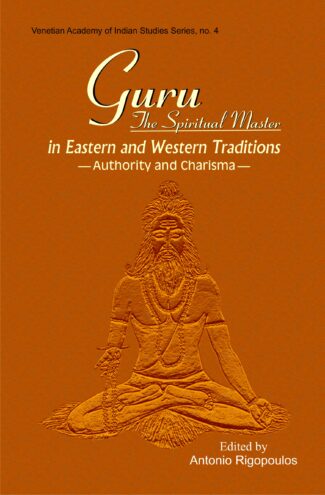
The book, examines the relevance attached to the institution of the guru with special reference to the religions and philosophies of India and explores the nature and function of the guru figure and the master-disciple interaction in the religious traditions of the world. It throws light on the link between overcoming fear, ritual death and immortality, and the guru figure in Indian traditions. The book will interest scholars of religion and philosophy particularly those studying Hindu and Buddhist religious-spiritual traditions.
The book, containing papers presented at a conference held in Venice, Italy, examines the relevance attached to the institution of the guru with special reference to the religions and philosophies of India. It explores the nature and function of the guru figure and the master-disciple interaction in religious traditions of the world including those of Hinduism, Buddhism, ancient Greek, Judaism, Islam, Christianity, Confucianism and native American traditions. It delves into the dynamics of the gurus influence and guru-disciple interaction that involves two aspects of power spiritual power and the very worldly socio-political and economic interests. It deals with characteristics and charisma associated with the figure of the spiritual master, his authority, pupils devotion for him, trials for a pupil, motivations of a guru, pandita as guru and recognition of the true master. It scrutinizes the difference in the Eastern and Western traditions vis-a-vis the guru-disciple relationship referring to a variety of sects, thinkers and works: the Mahabharata, Sufism, tantric traditions, Theravada and Vajrayana Buddhism, and the guruvada among Bauls of Bengal. The study meticulously unravels certain fundamental questions like sources of legitimation of religious authority within a religious-spiritual tradition. It throws light on the link between overcoming fear, ritual death and immortality, and the guru figure in Indian traditions. The book will interest scholars of religion and philosophy particularly those studying Hindu and Buddhist religious-spiritual traditions.
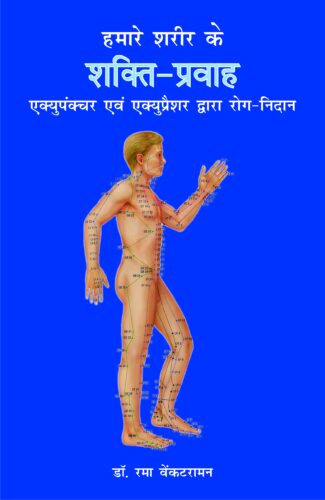
The book speaks about the usefulness and advantages of acupuncture and acupressure therapies. It also attempts to understand the concept of kundalini energy and its association with acupressure.
The Energy Pathways in our Body
Acupuncture and acupressure are drugless therapies that are safe, simple, economical and yet very effective for treatment and prevention of a range of common diseases and ailments. The volume is an attempt to understand acupuncture: its effects and the theory of yin and yang that forms the basis of acupuncture. It examines the causes of diseases and functioning of organs of the body. It discusses the nature of the acupuncture points present in the 14 channels and the way the activation of these points helps in treatment of various disorders in the body. With numerous drawings depicting the various body parts and acupuncture points, it deals with the specific acupuncture points for treating specific tissues. It also notes the symptoms of diseases of different organs.
The book details the advantages of the ancient therapy of acupuncture, especially as it doesn’t have side-effects and can be followed along with other modes of treatment like homoeopathy. There is also an attempt to understand the concept of kundalini energy and its association with acupressure. A list of important instructions for the acupuncture practitioners explains the correct procedures of applying pressure at points. A chapter on case histories mentions successful treatment given to patients with a range of ailments.
The book will be useful to scholars and students of medical science in general but particularly those interested in alternative medicines and medical therapies.
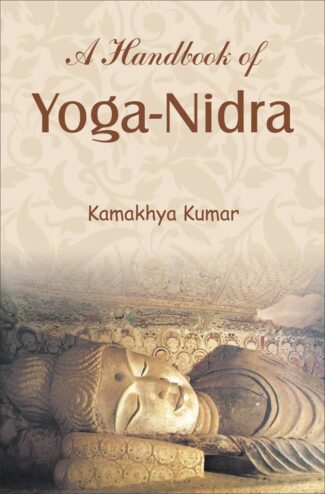
Mental imbalances due to psychological crises are the root cause of many physical and mental diseases. Yoga-nidra is the best therapy to induce complete physical, mental and emotional relaxation. It stimulates sleep in insomniacs and has come very effective in treating pain, neurosis and even disability.
The psychological crisis of this age is one of the severest challenges that human race has ever faced. Mental imbalances and their manifestations in the form of psychosomatic diseases pose serious health threat. To address this challenge, Indian yogis have found a wonderful relaxation technique yoga-nidra. They were fully aware that the inner tensions or imbalances of an individual can be best dealt with inner peace. The yogic texts unequivocally emphasize that peace can only be found within.
This volume deals with varied aspects of yoga-nidra and delves deep into its relationship with the stages of sleep, dream and samadhi. It highlights the topic in such a way that among the numerous relaxation therapies, yoga-nidrà is the best to induce complete physical, mental and emotional relaxation. It peels off the subliminal sheath of conscious mind that covers the inner core of the unconscious mind. Yoga-nidra is a state between sleep and samadhi, a half-sleep, a half-waking state. It removes fluctuations from all planes of mind. It helps insomniacs by stimulating sleep. This title underlines the regular usage of yoga-nidra in treating pain, neurosis and even disability. It also provides the practical utility of yoga-nidra with lots of evidences on the basis of experimental studies. Their references are well mentioned into it, which will help the scholars in their further studies and research.
This book should benefit the patients of insomnia, psychiatrists and all those who want to dwell in the bosom of mental peace, and those who are determined to experience the higher levels of meditation.

Mental imbalances due to psychological crises are the root cause of many physical and mental diseases. Yoga-nidra is the best therapy to induce complete physical, mental and emotional relaxation. It stimulates sleep in insomniacs and has come very effective in treating pain, neurosis and even disability.
The psychological crisis of this age is one of the severest challenges that human race has ever faced. Mental imbalances and their manifestations in the form of psychosomatic diseases pose serious health threat. To address this challenge, Indian yogis have found a wonderful relaxation technique yoga-nidra. They were fully aware that the inner tensions or imbalances of an individual can be best dealt with inner peace. The yogic texts unequivocally emphasize that peace can only be found within.
This volume deals with varied aspects of yoga-nidra and delves deep into its relationship with the stages of sleep, dream and samadhi. It highlights the topic in such a way that among the numerous relaxation therapies, yoga-nidrà is the best to induce complete physical, mental and emotional relaxation. It peels off the subliminal sheath of conscious mind that covers the inner core of the unconscious mind. Yoga-nidra is a state between sleep and samadhi, a half-sleep, a half-waking state. It removes fluctuations from all planes of mind. It helps insomniacs by stimulating sleep. This title underlines the regular usage of yoga-nidra in treating pain, neurosis and even disability. It also provides the practical utility of yoga-nidra with lots of evidences on the basis of experimental studies. Their references are well mentioned into it, which will help the scholars in their further studies and research.
This book should benefit the patients of insomnia, psychiatrists and all those who want to dwell in the bosom of mental peace, and those who are determined to experience the higher levels of meditation.
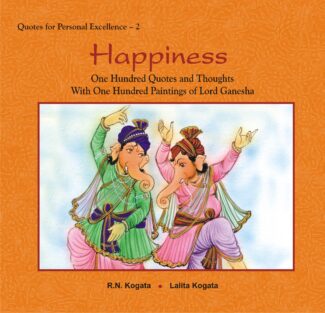
Happiness is a feeling of joy, satisfaction, peace of mind, contentment and equanimity. It is distinctly different from pleasure. Through 100 quotes, this book meaningfully and vividly delves deep into the varied aspects and means of happiness. Each quote has a stimulating painting of Lord Ganesha, the Lord of Peace, Prosperity and Wisdom, corresponding the theme.
The authors, through 100 quotes, meaningfully and vividly delve deep into varied aspects and means of happiness. Each quote has a stimulating painting of Lord Ganesha, the Lord of Peace, Prosperity and Wisdom, representing its theme. While many of these thought-provoking and enlightening quotes are from highly reputed global personalities, some are the own creations of the authors.
Happiness, the ultimate purpose in one’s life, is a feeling of joy, satisfaction, peace of mind, contentment and equanimity. It is distinctly different from pleasure, which is shortlived. Happiness comes through correct means dutifulness, integrity, purity of thoughts, righteousness and virtue. It is abliss and cannot be achieved by wrong means. Happiness always rebounds on the giver. To remain in this realm one should follow some simple rules. This book is an earnest attempts to put up those simple fundamentals.

This book unfolds the unknown aspects of the Harappan civilization. It throws light on Harappan people’s composition, movement, dietrary habits and burials; and also on the study of human skeletal remains.
This book unfolds the unknown aspects of the Harappan civilization. It throws light on Harappan people’s composition, movement, dietrary habits and burials; and also on the study of human skeletal remains.
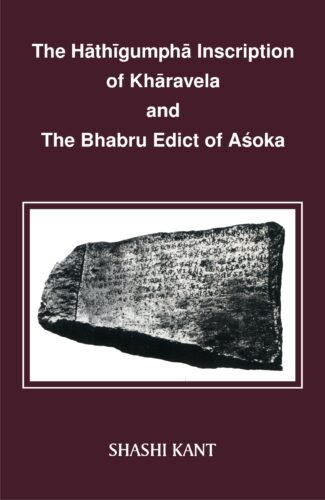
It examines the date, authorship and decipherment of the epigraph that throw light on Jain and Buddhist scriptural traditions and Asokas association with Buddhism as also the socio-political conditions during the three centuries before Christ.
Ever since its discovery in ad 1825, Kharavelas Hathigumpha Inscription has had a fascinating course. It is not a royal panegyric merely; it is an epitome of history, specially of the so-called dark period unveiling, as it does, the political and cultural conditions that prevailed in India during the three centuries before Christs birth. And yet more significantly, it is the only hitherto-known document to tell the saga of its heroic author: the first historical king from Indias eastern coast to lead extensive campaigns in different directions. But for this inscription, Mahameghavahana Kharavela could never have been resurrected from oblivion. Likewise personal in character is Ashokas Bhabru Edict, considered as the earliest written record of Buddhist scripture and monastic organisation. For the history of Buddhism, this little document is as important as the Kharavelas Hathigumpha Inscription is for that of Jainism. Shashi Kants study examines afresh these inscriptions: not just for their thematic similarity, but essentially for their crucial historicity. Going into their tenor and context, it is the first ever decipherment/interpretation of the two rare documents, with the whole Jaina and Buddhist traditions in the background. The author demolishes myths, addresses controversies and, these besides, offers convincing theories that are authenticated by recent archaeological findings. Acclaimed and favourably reviewed in India and elsewhere alike, this epigraphic study is now in its second, enlarged edition including a whole new section on the genesis of the Prakrit languages and the ancient Indian scripts. Together with the original epigraphs, their romanised transliteration and English translation, it holds out immense appeal to the scholars of ancient Indian history, epigraphy, archaeology, and Buddhist-and-Jaina studies.
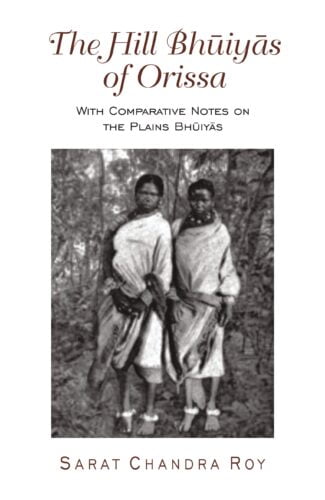
This book, a gold mine of socio-anthropological study of Orissan Pauri Bhuiyas, talks about affinities and population, habitat, physical and mental characteristics, economic life, social and kinship organizations, and customs of birth, childhood, puberty, marriage, inheritance and death. This volume also delves deep into their folklore, religious faith, superstitions and magic practices.
Bhuiyas, numbering around two million, are the aboriginal tribes of Central Hill Belt of India. These primitive Pauri or Hill Bhuiyas of Keonjhar, Bonai and Pal Lehera states, and the Hinduized Bhuiyas of Himgir and Nagra of Gangpur State of Orissa in British India are the subject of this study, delineating their various stages of cultural development over a period of time.
These Bhuiyas are comparatively more primitive in their customs and manners than the other sections of the tribe. But their contacts with the Hindu society and its culture have to a minimal extent modified their primitive culture. With the advent of cultural growth, some sections of these Bhuiyas have given up their honorific titles and adopted some Hinduized titles, to elevate themselves in the social hierarchy.
This book, a gold mine of socio-anthropological studies, offers much-needed details about the Pauri Bhuiyas affinities and population, habitat, physical and mental characteristics, economic life, social and kinship organizations, and customs of birth, childhood, puberty, marriage, inheritance and death. This volume also delves deep into their folklore, religious faith, superstitions and magic practices. It further discusses certain points of agreement and difference in the customs and beliefs of the Hill Bhuiyas and some other Munda-speaking tribes of the Central Hill Belt.
| There are no products |